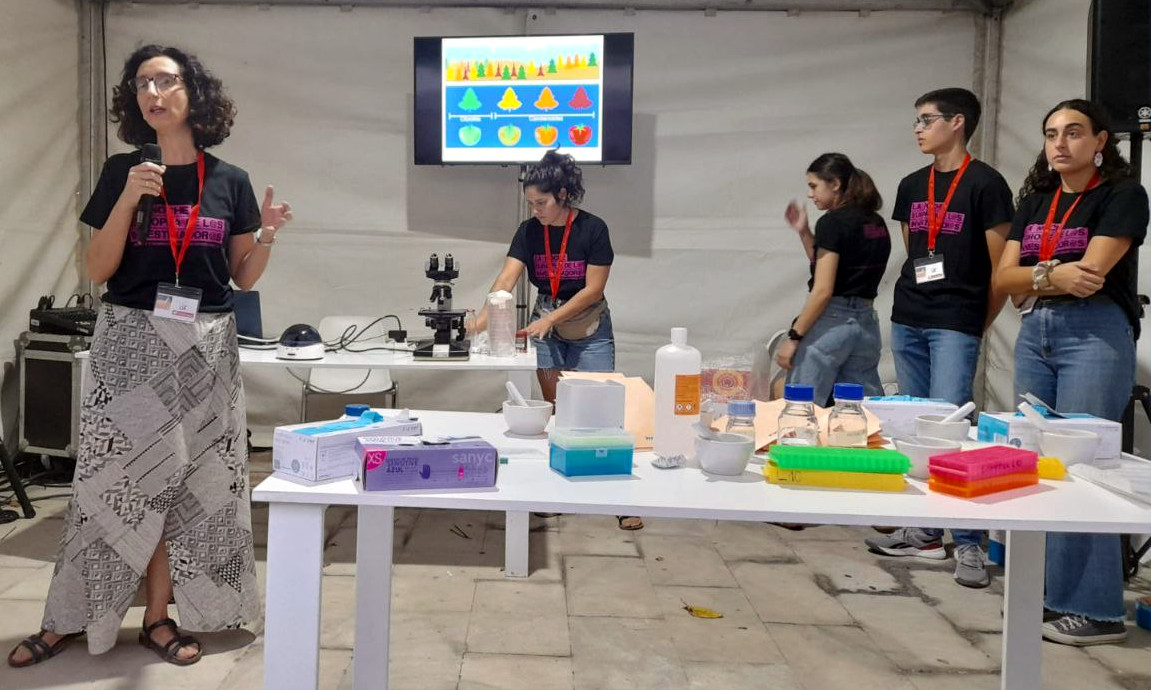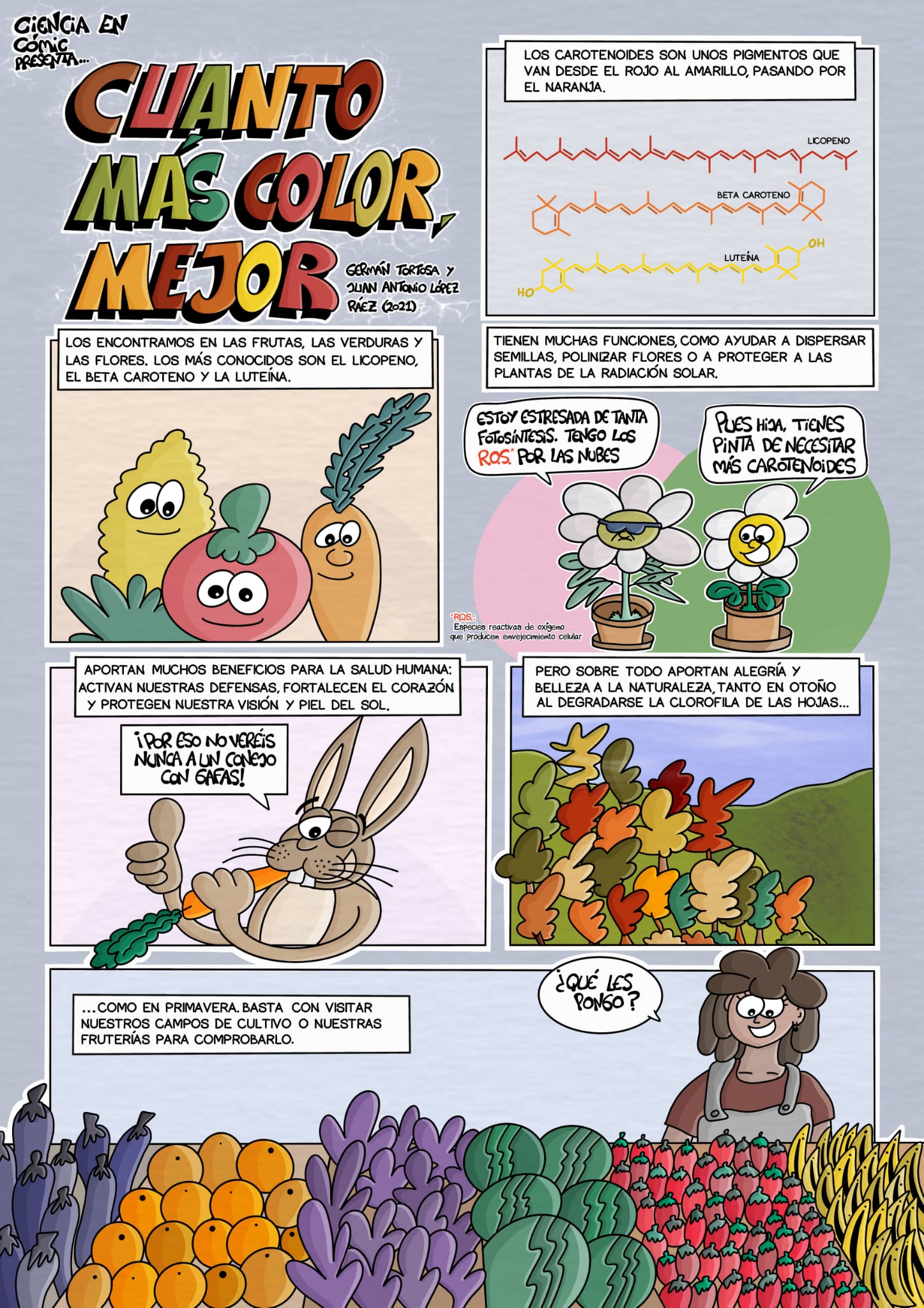| CaRed
Research
History
Divulgation
Events
Links |
 |
 |
|
The
carotenoids
|
|
Carotenoids are very
versatile and important metabolites that can be used
as natural colorants, antioxidants, and as source of
vitamin A, as well as functional ingredients. There
are more than 1100 natural carotenoids investigated
in more than 600 organisms, including algae, plants,
fungi, bacteria, archaea and some arthropods. Today
we know a lot about the presence of carotenoids in
the foods we eat, and their influence on our health
is well known. The antioxidant activities of
carotenoids regulate oxidative stress and
inflammatory mediators, thus protecting against
neurodegenerative diseases (Alzheimer's,
Parkinson's), cancer, metabolic syndromes and photo
oxidative damage to the eyes and skin. In 2020,
the global carotenoids market value was
estimated at approximately $1.7 billion and is
expected to reach $2 billion by 2027, at a
compound annual growth rate (CAGR) of 3.4%.
Furthermore, the European natural pigments
market size is expected to reach a value of
$2.18 billion by 2028 with an expected CAGR of
10.1% over the forecast period. The existence of
a huge feed sector and a well-established
cosmetics industry are the major drivers for the
growth of the carotenoids market. In addition,
carotenoids are also among the preferred food
colorants in European markets, driven by (i)
growing concern for synthetic carotenoids over
natural carotenoids (with plants and microalgae
as major sources); (ii) increased focus on
consumption of natural/functional products; and
(iii) increased demand for cosmetics and
nutraceuticals. |
Divulgation activities
DIVULGATIVE MONOGRAPHIES
| Astaxanthin Mercedes García González. IBVF-US. Biotechnology for food biofortification Manuel Rodríguez Concepción. IBMCP-CSIC. Carotenoid producing fungi M. Carmen Limón y Javier Avalos. USBIO. Carotenoids versatility and food safety Ángeles Morón-Flores y Antonio Jesús Meléndez-Martínez. FAR-US. |
Crocins (I) Lourdes Gómez Gómez. UCLM. Red-fleshed oranges with high carotene content: color and health Jaime Zacarías-García, Lorenzo Zacarías y Mª Jesús Rodrigo. IATA-CSIC. Vitamin A and Provitamin A. Where do we get them from and in what quantity do we Spaniards take them? Begoña Olmedilla Alonso. ICTAN-CSIC. |
PUBLICATIONS
| BOOKS In 2020, the coordinator of previous editions of the network, Manuel Rodríguez Concepción, wrote a book on carotenoids, with illustrations by his collaborator Ernesto Llamas, which was revised by all the members of the network. Aimed especially at school and high school students and written in a pleasant and didactic way, the book aims to provide basic information on carotenoids and their functions in nature, and to raise awareness of the advantages and beneficial properties that the consumption of foods rich in carotenoids has on health. Versions are available in Spanish, English, French, Catalan/Valencian, Galician, and Basque: El mundo de los carotenoides The world of carotenoids Le monde des caroténoïdes El món dels carotenoides O mundo dos carotenoides Karotenoideen mundua  |
ARTICLES IATA-CSIC Lado J, Cronje P, Rodrigo MJ, Zacarías L (2016) La presencia de licopeno en la piel de los frutos de pomelo incrementa la tolerancia a los daños por frío. Levante Agrícola, Especial Postcosecha, número 432, pp 152-167. IATA-CSIC Lado J, Rodrigo MJ, Zacarías L (2016) Evaluación del papel del licopeno en la tolerancia a los daños por frío durante la conservación refrigerada de frutos de pomelo rojo. Revista del Laboratorio Tecnológico del Uruguay, INNOTEC 2016, 11, pp 47-53. ICTAN-CSIC Olmedilla Alonso B (2022) Una dieta rica en frutas y hortalizas para ralentizar los problemas de visión. The Conversation, 17 march 2022. ISSN 2201-5639. |
|
EXHIBITIONS
M. Carmen Limón and US-BIO group Exhibition "Carotenoids and health: Fungi that help us to avoid diseases". Participatory activity aimed at students from 10 to 12 years old. After an introductory talk, participants extracted carotenoids and separated them in a thin layer crhomatography. Organized as part of the European Researchers' Night, held in the courtyard of the Rectorate of the University of Seville. 29 September 2022. M. Carmen Limón and US-BIO Group Workshop "Carotenoids and health: Fungi that help us to avoid diseases". Activity aimed at all audiences. The benefits of eating foods rich in carotenoids to prevent diseases were explained. Participants extracted carotenoids from carrots and from a carotenoid superproducer of the fungus Fusarium fujikuroi, which they were able to see in cultures and under the microscope. Organized by the European Researchers' Night, in Plaza Nueva, Seville. September 29, 2023.  |
PRESENTATIONS
IN PROFESSIONAL FORUMS Raquel
Esteban. UPV/EHU
Talk on September 26, 2023. Topic "Climate change and its impact on soil health and the plants we consume: Challenges and solutions for the present and future". Activity organized in the Session "Food and climate change". Colegio de Médicos de Bizkaia. Presential and broadcast via streaming. Announcement |
| TALKS AT
EDUCATIONAL CENTERS M. Carmen Limón. US-BIO A talk titled "Fungi as carotenoid producers". February 11, 2021. Delivered online to high school students of IES Fuentepiña (Huelva) on the occasion of the International Day of Women and Girls in Science. Javier Avalos. US-BIO Four one-hour talks. Title: "The carotenoids" (two in December 2019, and two in October 2022). Audience: 6th grade primary school students of CEIP Miramontes de Azuaga (Badajoz). |
OTHER
INITIATIVES
Juan Antonio López Ráez. EEZ-CSIC In collaboration with his EEZ colleague Germán Tortosa Muñoz, they created the spanish comic page "Cuanto más color mejor" (The more color the better), shown below, within the series "Science in Comic".  |
CaRed in the media
| PRESS CRAG-CSIC Catalan scientists discover why tomatoes turn red as they ripen (1/2/2016). El Confidencial CRAG-CSIC Mechanism that destroys or recycles defective proteins discovered in plants (28/1/2016). La Vanguardia CRAG-CSIC: Centre for Research in Agricultural Genomics, Barcelona (labotatory of the group of M. Rodríguez-Concepción in former CaRed editions) |
RADIO UCLM "What is Tomafran?". Intervention of Lourdes Gómez in the Program 'Investiga que no es poco' (25 Nov 2023), Radio Castilla la Mancha. IG-CSIC "¿What do I eat?" Intervention of Dámaso Hornero-Méndez in the Program '75 Minutes' (25 Oct 2016), Canal Sur Televisión. ICTAN-CSIC Participation of Begoña Olmedilla Alonso in the program of Radio Nacional de España “Juntos paso a paso”, recorded at ICTAN on 4 July 2018 and broadcast on Saturday 7 July 2018. From minute 26:30 to 30:30 dedicated to carotenoids. TELEVISION EEZ-CSIC Canal Sur de Andalucía echoes the research carried out by the group of our colleague Juan Antonio López Raez at the Zaidín Experimental Station in Granada, which studies the role of strigolactones, hormones derived from carotenoids, in the formation of mycorrhizae. Dr. Lopez Rae's group has carried out field experiments inoculating mycorrhizal fungi to tomato plants with the aim of reducing the use of phytochemicals and carrying out a more environmentally friendly agriculture. Canal Sur.es |